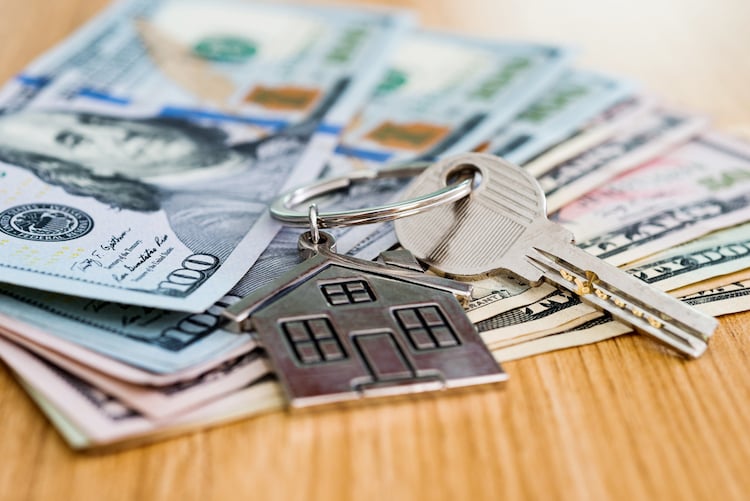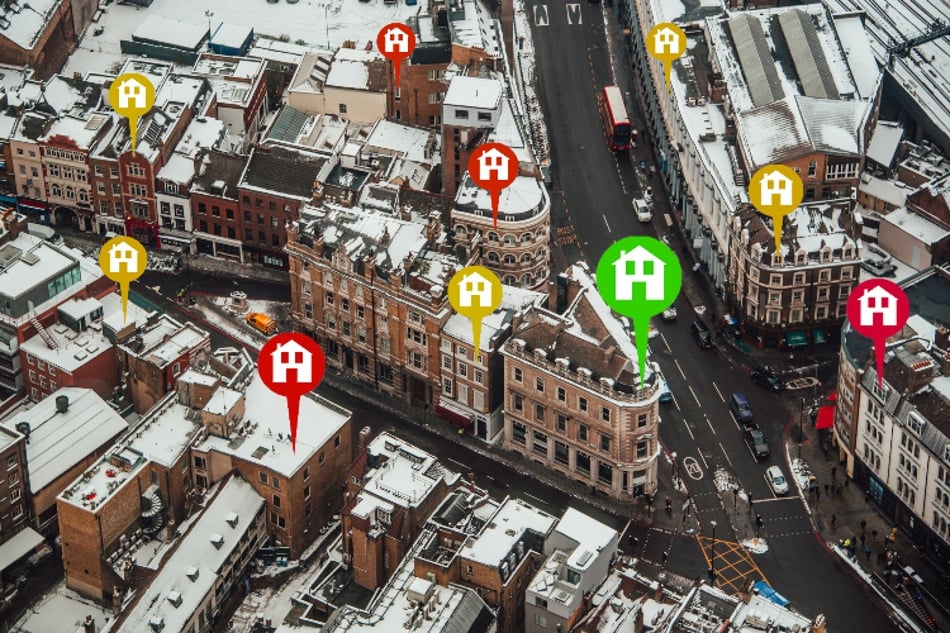Large real estate investment companies collectively own real estate portfolios with hundreds of billions of dollars in assets.
Many beginning real estate investors are surprised to learn that portfolios of real estate aren’t only for the big players. In fact, any investor can build a real estate portfolio with the proper planning.
Keep reading to learn how to build a real estate portfolio of your own in 6 steps, and how to scale-up and grow an investment portfolio beginning with just one property.
Key takeaways
- A real estate portfolio is often part of a larger diversified investment portfolio of stocks, bonds, and other investments.
- Assets held in a real estate portfolio can include single-family rental homes, multifamily properties, and short-term rentals.
- Investors can build a real estate portfolio by selecting the right investing strategy to meet their unique goals, such as generating rental income or creating generational wealth.
What is a real estate portfolio?
A real estate portfolio is part of a person’s overall collection of assets and investments, such as stocks, bonds, mutual funds and ETFs, precious metals, crypto, cash, and of course real estate.
The contents of a real estate portfolio (also known as a real estate investment portfolio) vary from investor to investor, the same way that other investment assets do.
A real estate portfolio may include properties from different asset classes, such as single-family rental homes, small multifamily buildings, and commercial properties.
Property shares in a rental home, investments made in a real estate partnership or crowdfund, and shares in a real estate investment trust (REIT) might also be part of a real estate portfolio, depending on how diversified the portfolio is.

Why people build a real estate portfolio
The primary goal of building a real estate portfolio is to help an investor obtain their financial objectives.
For some people, that means building a collection of cash flowing rental properties.
Other people might build a real estate portfolio to edge against inflation and stock market volatility or to build a portfolio of real estate to pass along to their heirs to help build generational wealth.
Real estate portfolio investing strategies
It’s never too early or too late to begin building a real estate portfolio. However, the types of investments may differ depending on an investor’s age, length of time until retirement, and overall investment goals.
Generation Z investors who are just entering the workforce may choose to house hack by renting out a room in a single-family home or purchasing a multifamily property and living in one unit as a primary residence.
On the other hand, many Millennials are a little further along in their careers and have built up a nest egg. Investing in rental property that provides a balanced mix of risk and reward might be a good addition to a real estate portfolio, such as purchasing a fixer-upper home and making repairs to earn instant equity.
For Generation X and Baby Boomers who are nearing retirement and may be more risk averse, purchasing newer rental property in a higher quality neighborhood may make the most financial sense.
How to build a real estate portfolio in 6 steps
While there is no single right way to invest in real estate, there are some general steps to follow to build a real estate portfolio.
1. Learn about real estate investing
“Financial freedom is available to those who learn about it and work for it,” according to Robert Kiyosaki, best-selling author of Rich Dad Poor Dad. While there may be something to be said for learning by doing, the first step to success in real estate investing begins by learning the business.
There are plenty of free or inexpensive ways to learn about real estate investing. Real estate blogs, local real estate investing groups, and real estate investing channels on YouTube provide three ways to start learning about real estate right away.
The Roofstock Academy is another excellent option to consider for people who want to learn how to build income through real estate investing. Students will learn strategies for successful real estate investing and tips for avoiding mistakes. Topics covered include creating a system to analyze potential deals and methods to accelerate growing a real estate portfolio.
2. Write a real estate business plan
The second step to building a real estate portfolio is to write a business plan. A written real estate business plan helps to lay a solid foundation for creating and achieving real estate investing goals.
A good real estate business plan includes investing strategy, investment goals, and a plan for financing property purchases:
Investing strategy
Active real estate investing involves a hands-on strategy such as fixing-and-flipping homes or, in states where a real estate broker license is not required to do so, wholesaling property for short-term profit. A buy-and-hold is a strategy used to generate recurring cash flow and long-term appreciation.
Investment goals
Investment goals in a real estate business plan should be specific, measurable, achievable, realistic, and timely (SMART). For example, if the goal is to purchase one single-family rental home each year using a $25,000 down payment, the business plan should describe how to save $500 per week.
Financing plan
Some people begin investing in real estate by house hacking, such as renting out a room in a home or purchasing a small multifamily property and using one unit as a primary residence. House hacking can be effective because financing a primary residence generally requires a smaller down payment, and loans have lower interest rates.
Other options for investment property loans include conventional loans with a down payment of 25% or more, investing with partners, or using a self-directed IRA for real estate investment.
3. Know what makes a good rental property
Although the demand for investment real estate is strong today, not every property in every housing market makes a good rental property. Some features to look for that can make a city and home good for rental property include:
- Population growth
- Job market
- Renter occupied households
- Available homes for rent
- Rent growth
- Location
- Neighborhood ranking
- Property management
- Cash flow
- Appreciation
- Expenses
- Property taxes
4. Find a rental property
Getting detailed information about rental property investments in different markets can be difficult, unless one knows where to look.
One option for finding rental property is the Roofstock Marketplace. In less than 6 years, buyers and sellers from around the world have completed more than $3 billion in single-family rental transactions in the U.S. on the Roofstock Marketplace.
Most single-family rental home and small multifamily property listed for sale on Roofstock include:
- A property description and pictures.
- Due diligence documents such as the title report.
- Tenant ledger and lease summary (if the home is already rented).
- Calculations of estimated financial metrics such as cash flow, annualized return, and projected appreciation.
5. Purchase an investment property
Once a good rental property has been selected, the next step is to tie the home up by putting it under contract before another investor does. There are seven general steps to follow when purchasing your first investment property:
- Put together the down payment from savings, tapping into an IRA, or raising money from family and friends.
- Check your credit score, because borrowers with better credit scores usually receive the best interest rates and terms on an investment property loan.
- Get pre-approved for a mortgage to help make the purchase offer standout from the competition.
- Negotiate with the seller and make an offer they can’t refuse, such as offering to close as soon as the loan is approved and the home has passed inspection.
- Order a home inspection and appraisal to make sure that the home appraises for at least the purchase price.
- Close escrow through the title company.
- If desired, hire a local property management company to take care of the tenant and the day-to-day details of managing the property.
6. Gradually scale-up the real estate portfolio
One good way to scale-up a real estate portfolio is by using the snowball method to acquire more rental properties over time. With the snowball method, an investor uses the cash flow from one rental property to save up for the down payment for another.
For example, if a home generates a positive cash flow of $5,000 per year, after five years an investor will have saved $25,000 to use as a down payment for another rental property.
Some people contribute additional money earned from a full-time job to raise a down payment faster or turning accrued equity in one rental property into cash by doing a cash-out refinance.

Monitoring real estate portfolio performance
As a real estate portfolio grows, it’s critical to regularly track the financial performance of each property and the entire rental property portfolio. While there are plenty of property management solutions on the market, most charge an investor for more features than they really use. That’s why a growing number of both novice and sophisticated investors are using Stessa.
Stessa is a free asset management software system designed by real estate investors to help fellow investors automate income and expense tracking and maximize rental property profits.
After signing up for a free Stessa account, simply:
- Enter basic property information
- Link business banking and mortgage accounts
- Access the performance dashboard to monitor the financial performance of each asset at both the property and portfolio level
Investors can track unlimited single-family, multifamily, and short-term rentals with Stessa, organize and store real estate documents securely in the cloud, and run monthly reports such as income statements, net cash flow reports, and capital expenses.
Final thoughts on this topic
Building a good real estate portfolio requires advance planning, selecting a real estate investing strategy, and choosing good rental properties. It’s never too late to start building a portfolio, especially when there are so many real estate markets to choose from. Over time, an investor may scale-up a real estate portfolio to generate a steady income stream or achieve other financial goals.









